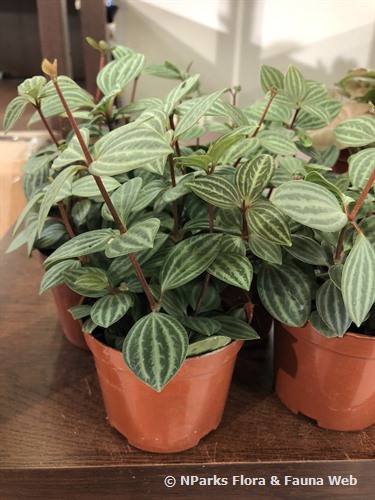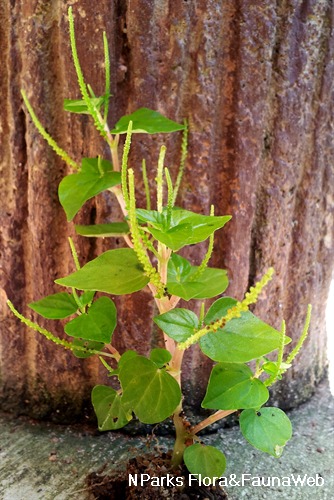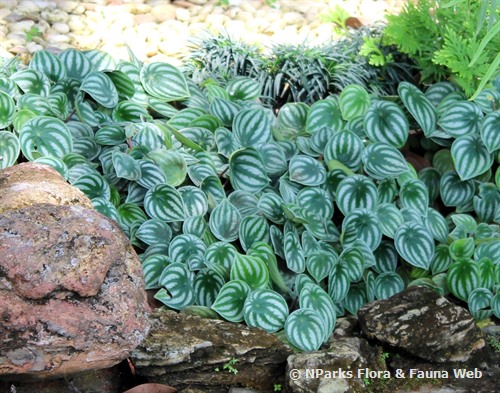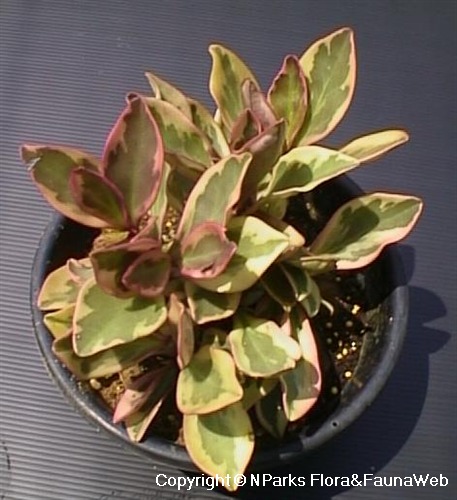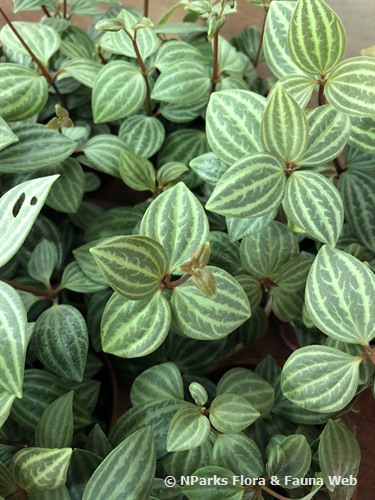
Back
Peperomia tetragona Ruiz & Pav.
| Family Name: | Piperaceae |
| Synonyms: | Peperomia puteolata Trel. |
| Common Name: | Parallel Peperomia |
Name
Classifications and Characteristics
| Plant Division | Angiosperms (Flowering Seed Plants) |
|---|---|
| Plant Growth Form | Herbaceous Plant |
| Lifespan (in Singapore) | Perennial |
Biogeography
| Native Distribution | Bolivia, Paraguay and Peru |
|---|---|
| Native Habitat | Terrestrial |
| Preferred Climate Zone | Tropical |
Description and Ethnobotany
| Growth Form | Herbaceous vine with a creeping or trailing growth habit, growing up to 0.6 m long. |
|---|---|
| Foliage | Stiff, leathery leaves are elliptic to lanceolate with entire leaf margin. There are 5 prominent, slightly sunken veins that run longitudinally and create a dark green and cream-striped pattern. Leaf arrangement is whorled with 3 - 4 leaves per node (point of leaf attachment to stem). |
| Stems | Reddish purple stems are round and tomentose (covered in soft, short hairs). |
| Flowers | Tiny, green flowers are borne on spike inflorescence that resemble rat tails. |
| Habitat | Occurs in rainforests. |
| Cultivation | This species is slow growing, but easy to grow. Plant it in fertile, well-drained soil and allow the soil to dry before re-watering. |
| Etymology | The genus Peperomia means resembling pepper and is derived from the Greek words homoios (similar to) and peperi (pepper). |
Landscaping Features
| Desirable Plant Features | Ornamental Foliage |
|---|---|
| Landscape Uses | Groundcover, Container Planting, Terrarium |
Plant Care and Propagation
| Light Preference | Semi-Shade |
|---|---|
| Water Preference | Moderate Water |
| Plant Growth Rate | Slow |
| Rootzone Tolerance | Moist Soils, Well-Drained Soils |
| Propagation Method | Stem Cutting |
Foliar
| Mature Foliage Colour(s) | Green, Green - Light Green |
|---|
Image Repository
Others
| Master ID | 30227 |
|---|---|
| Species ID | 4536 |
| Flora Disclaimer | The information in this website has been compiled from reliable sources, such as reference works on medicinal plants. It is not a substitute for medical advice or treatment and NParks does not purport to provide any medical advice. Readers should always consult his/her physician before using or consuming a plant for medicinal purposes. |

